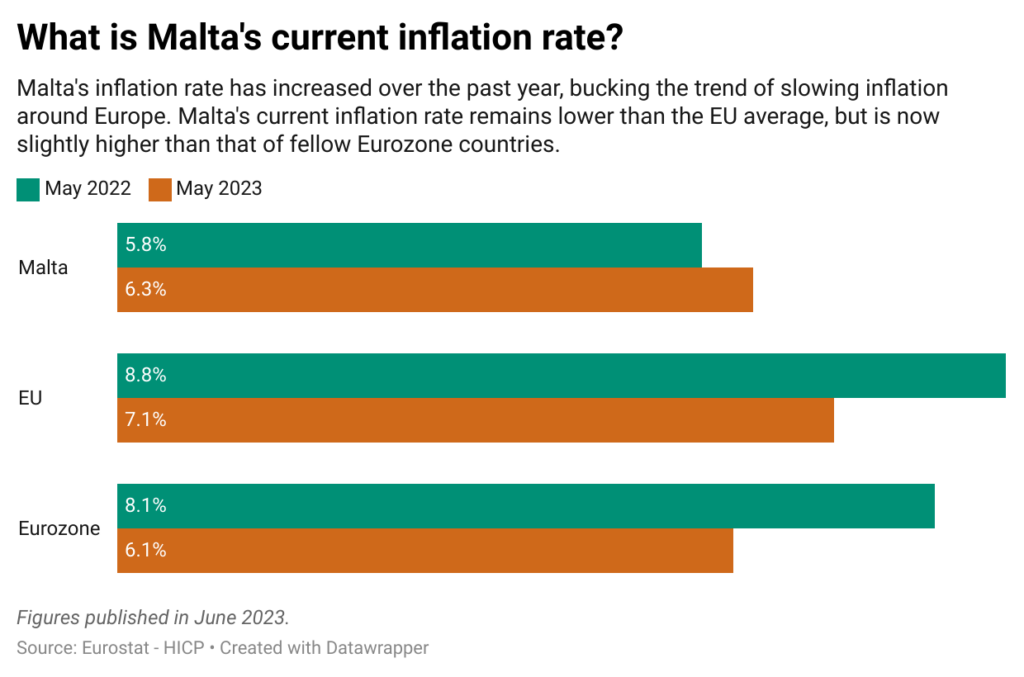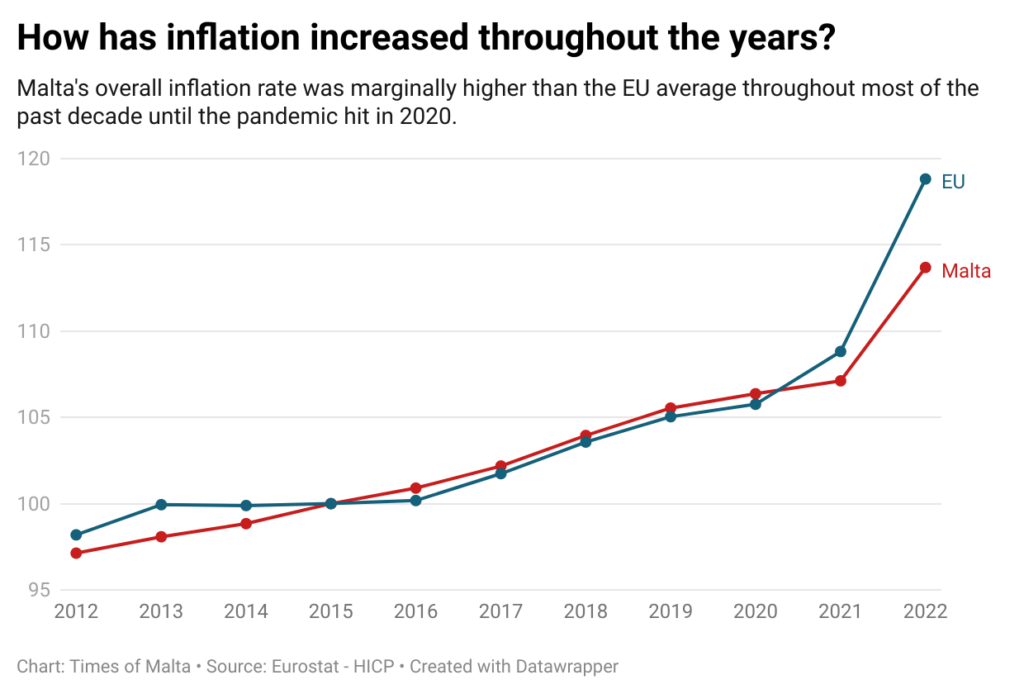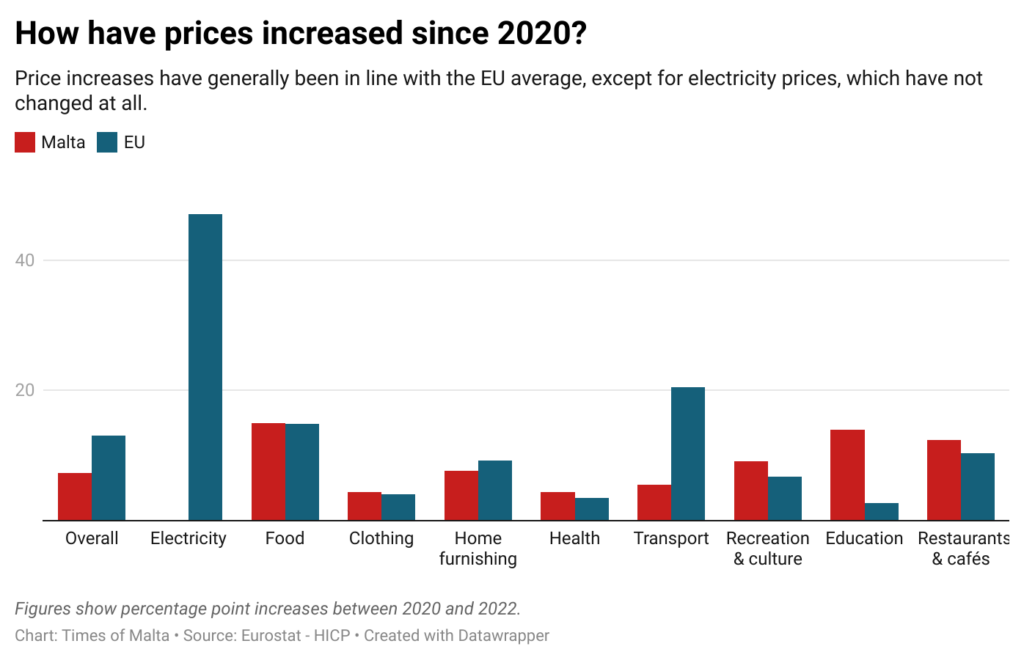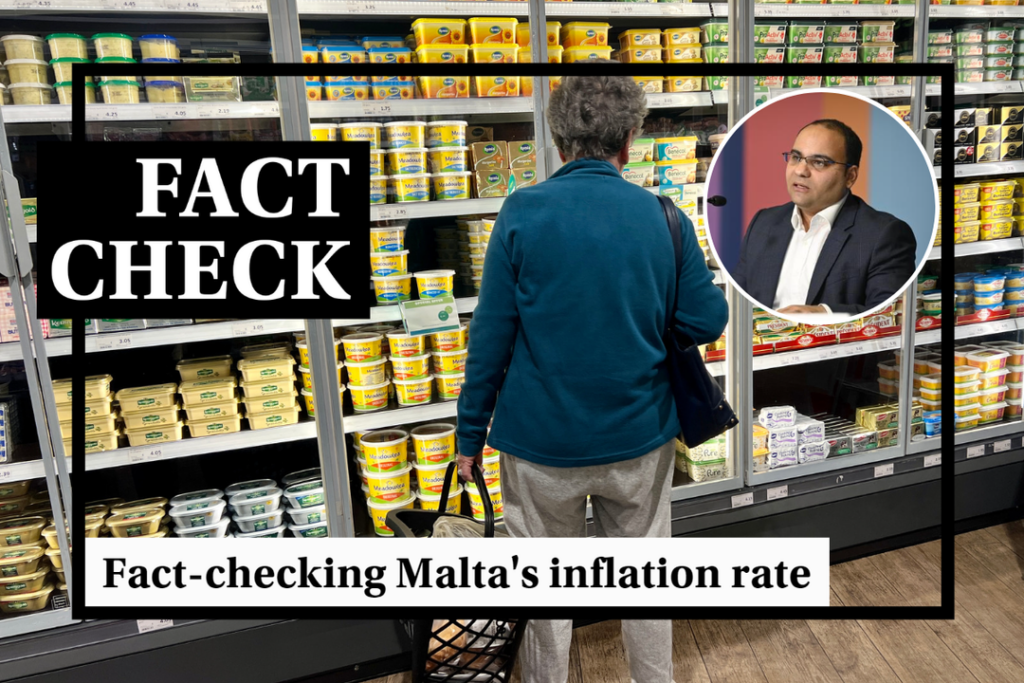Defending the government’s decision not to intervene in controlling food prices, Finance Minister Clyde Caruana said that the government had already carried out a bolder and more aggressive intervention by stabilising fuel and electricity prices.
This, Caruana said, led to Malta’s inflation rate being lower than that of many other countries.
“Our approach was the boldest and most aggressive, and even though we do have inflation, it’s not as high as in other countries.”
Several readers have asked Times of Malta to verify this statement, arguing that recent European data shows it to be incorrect.
Is Malta’s current inflation rate amongst the lowest in Europe?
Not according to the most recent Eurostat figures from May, which show that Malta’s current annual inflation rate lies at 6.3%.
While this is lower than the EU-wide average of 7.1%, it is marginally higher than the average of Eurozone countries at 6.1%.
In fact, the data places Malta near the middle of the pack, with 11 EU countries having a lower inflation rate than Malta and 16 countries suffering from higher rates.
The data also shows that Malta’s inflation rate has increased over the past year, rising from 5.8% in May 2022 to 6.3% in May 2023, bucking the EU-wide trend of slowing inflation over the same period.

How has Malta’s inflation rate changed since the pandemic?
Prior to 2020, inflation rates across Europe were stable, with only incremental increases between 2012 and 2019. The onset of the COVID pandemic in 2020 and subsequent events, most notably Russia’s invasion of Ukraine last year, brought on more drastic increases in inflation in the subsequent two years.
On the whole, inflation shot up by 13 percentage points across Europe between 2020 and 2022.
Malta experienced a similar trend, with moderate increases in inflation in the years leading up to the pandemic followed by sharper increases since.
Malta’s inflation increased by just over seven percentage points between 2020 and 2022, still a significant increase, but roughly half that experienced by the EU. Malta’s inflation rate throughout this period is the lowest in the EU, just ahead of France who experienced the second-lowest increase at 8.5 percentage points.

Is this down to energy prices?
Yes, the government’s decision to subsidise energy prices is a key factor in Malta’s lower inflation rate since 2020.
Malta was the only EU country to keep electricity prices fixed, with Eurostat data showing that electricity inflation has not budged since 2015.
By contrast, many other countries have experienced dramatic increases in energy costs, including neighbouring Italy, where costs have gone up by as much as 150 percentage points between 2020 and 2022.
On the whole, the cost of electricity in the EU has shot up by 47 percentage points over this period.
Malta’s stable energy prices were key to controlling inflation according to the Central Bank. The bank’s annual report for 2022 says that “the difference between Malta’s inflation rate and that in the euro area reflected the latter’s high energy inflation rate, which contrasted with zero energy inflation in Malta arising from Government measures”.
Likewise, PricewaterhouseCoopers’ economic outlook for 2023 notes that “when excluding the energy component…Malta’s inflation rate actually exceeds the Euro Area average”.
This is echoed by another report by the Central Bank, which finds that Malta’s annual inflation rate ranks the fifth-highest in the Euro area, only behind the Baltic states and Slovakia.
How does Malta’s inflation in other sectors compare?
A deeper dive into price increases across different everyday expenses shows that Malta’s inflation, excluding energy, is broadly in line with the rest of the EU.
The cost of food and non-alcoholic beverages in Malta has increased by 15 percentage points between 2020 and 2022, marginally higher than the EU average and higher than in 16 other EU countries.
Likewise, the cost of restaurants and cafés has increased by 12 percentage points in Malta, higher than the EU average of 10.
The cost of healthcare and education has also risen at a greater rate in Malta compared to other EU countries.
While the cost of healthcare in Malta (including medical services, pharmaceutical products and other equipment, such as contact lenses) has risen by 4.4 percentage points, the rest of the EU has seen a smaller increase of 3.5 percentage points.

Meanwhile, Malta experienced a 14-percentage point increase in the cost of education between 2020 and 2022, the third-highest increase in Europe, behind only Bulgaria and Lithuania. While education remains free up to tertiary level in Malta, NSO has previously attributed inflation in education to increases in private school fees.
Aside from energy, the only other area in which Malta’s inflation is significantly lower than that of its EU counterparts is transport, which increased by 5.5 percentage points, some 15 percentage points less than the EU average increase.
Verdict
The most recent data available shows that Malta’s inflation rate as of May 2023 is higher than that of 11 other EU countries and higher than the Eurozone average.
However, Malta’s inflation rate in the years since the onset of the COVID pandemic was the lowest in Europe. This was driven by the decision to freeze energy costs.
Inflation in most areas other than energy was broadly in line with other EU countries, sometimes exceeding the EU average.
The Times of Malta fact-checking service forms part of the Mediterranean Digital Media Observatory (MedDMO) and the European Digital Media Observatory (EDMO), an independent observatory with hubs across all 27 EU member states that is funded by the EU’s Digital Europe programme. Fact-checks are based on our code of principles.
Let us know what you would like us to fact-check, understand our ratings system or see our answers to Frequently Asked Questions about the service.





